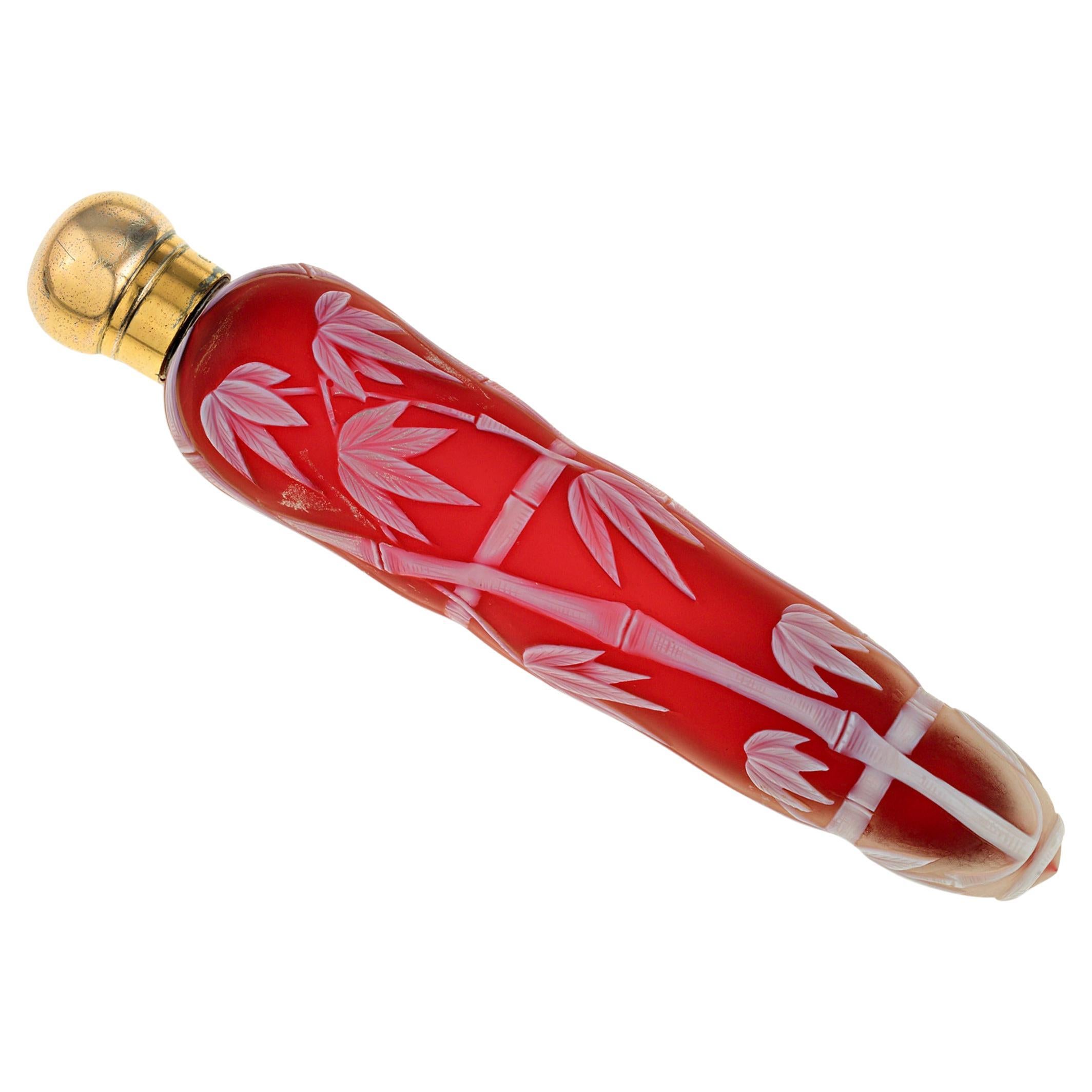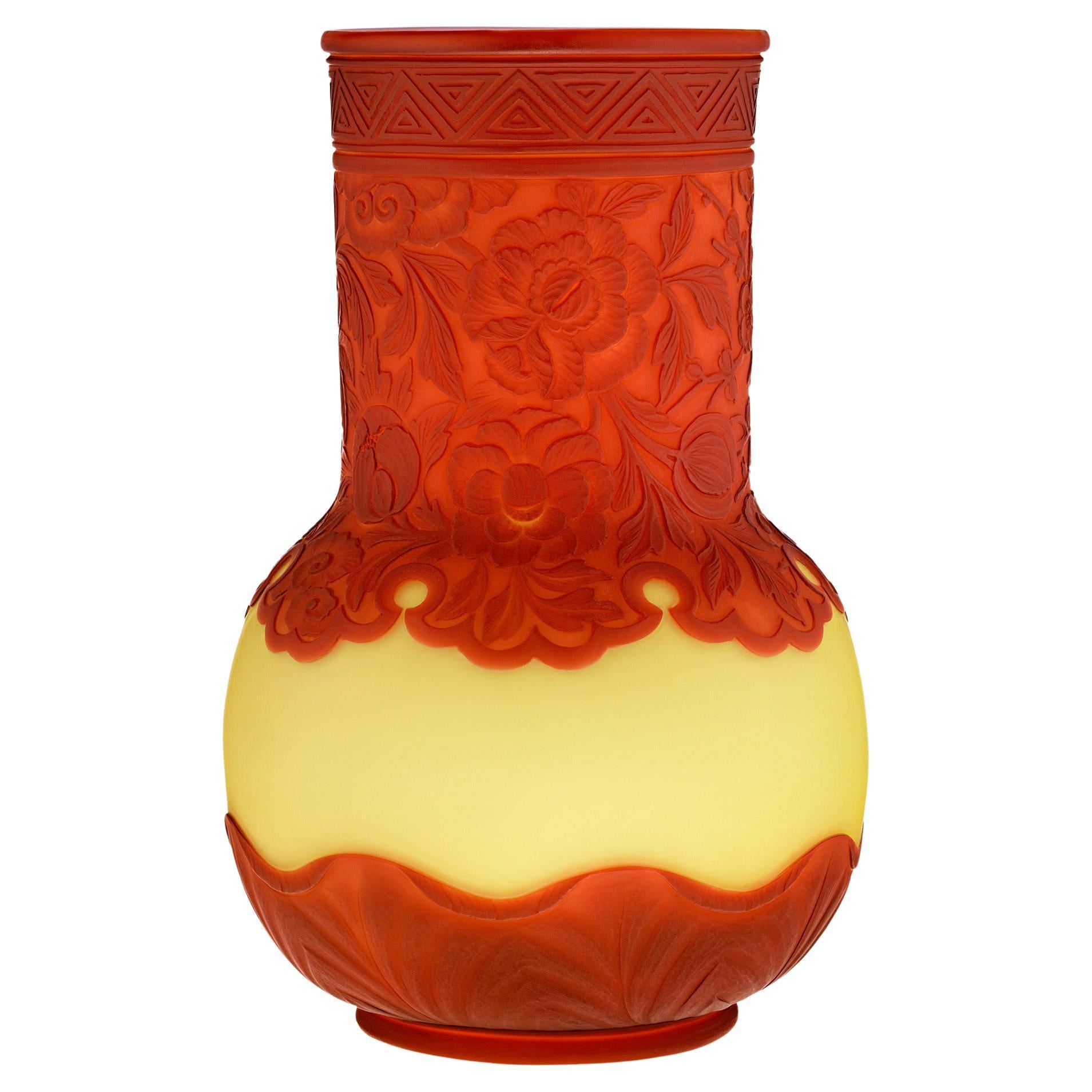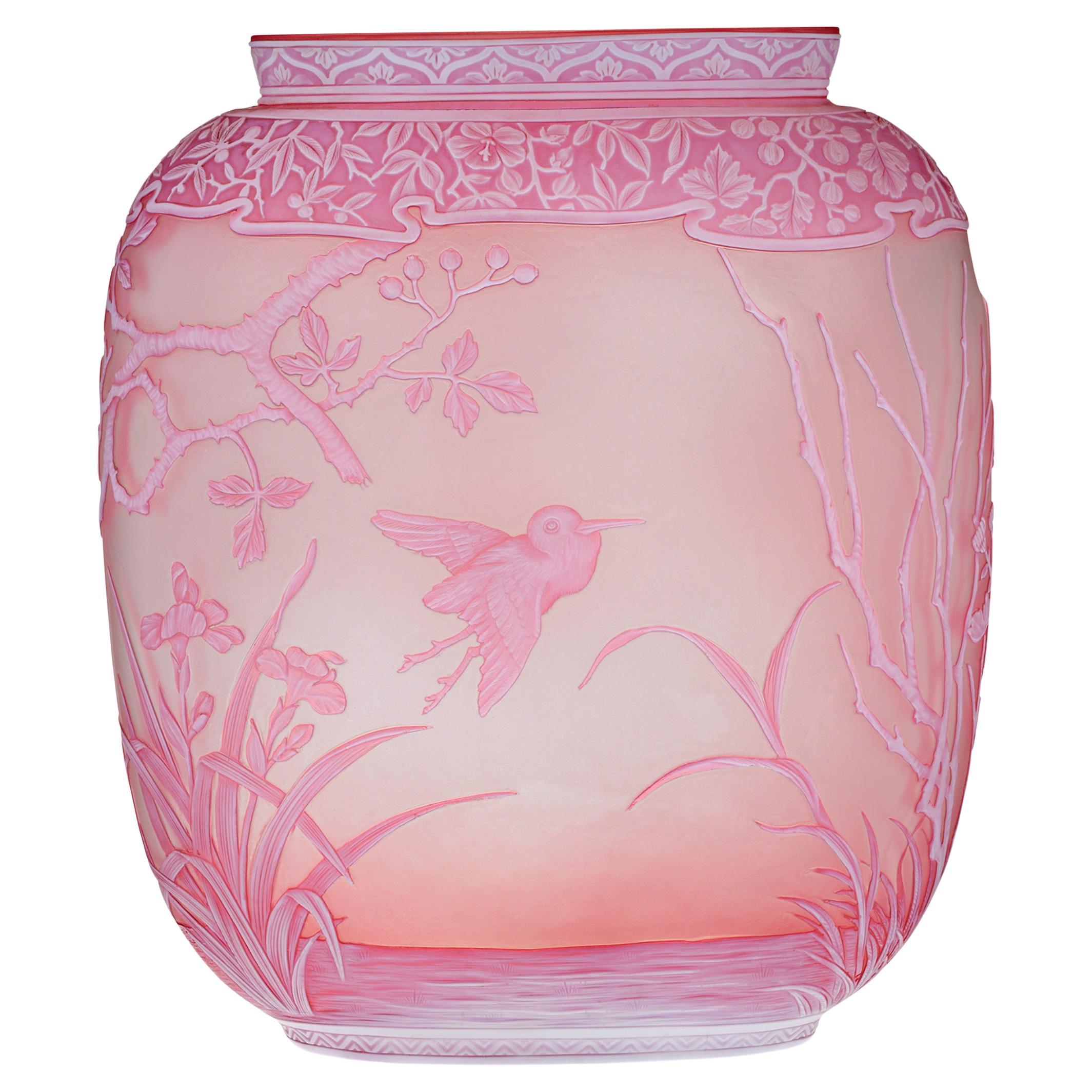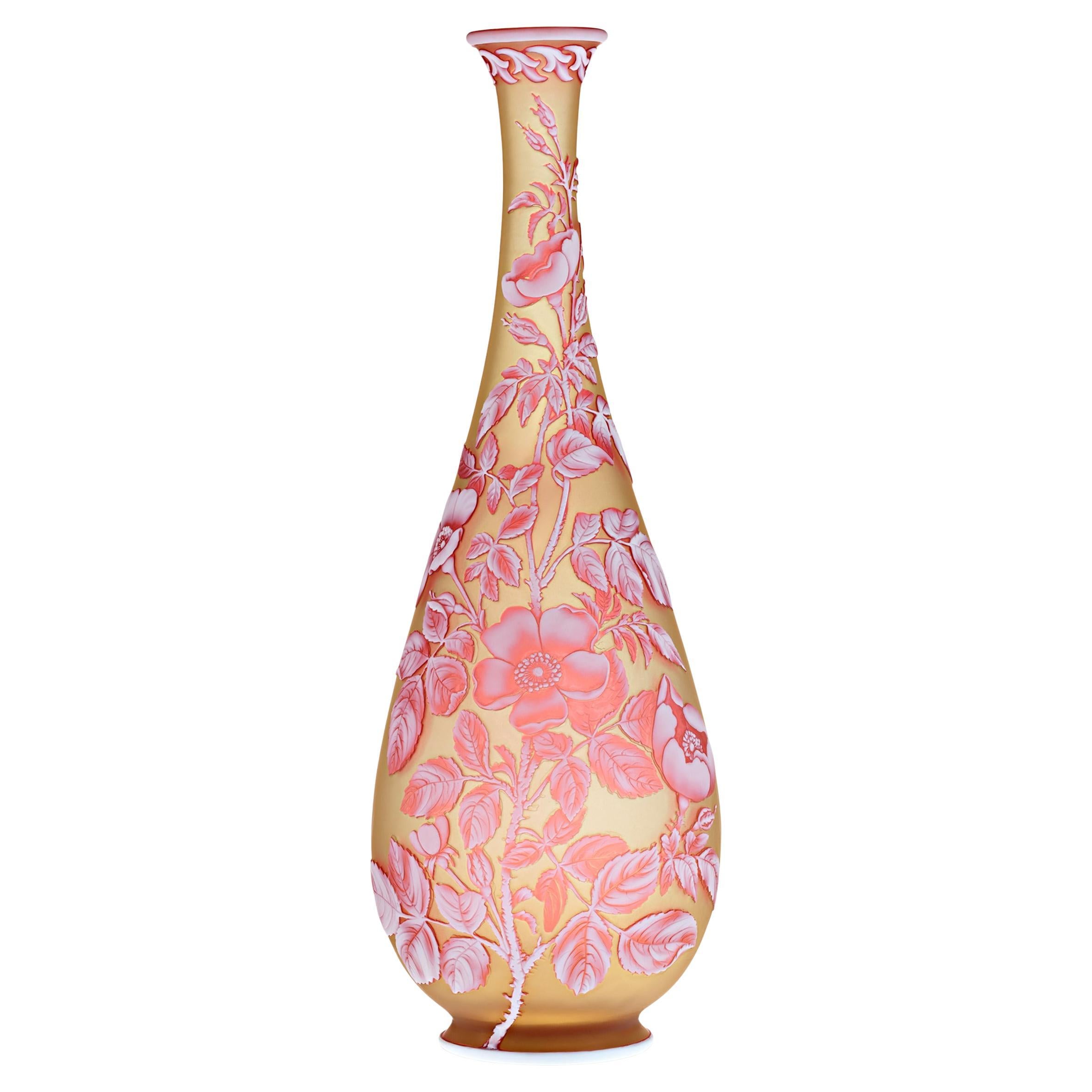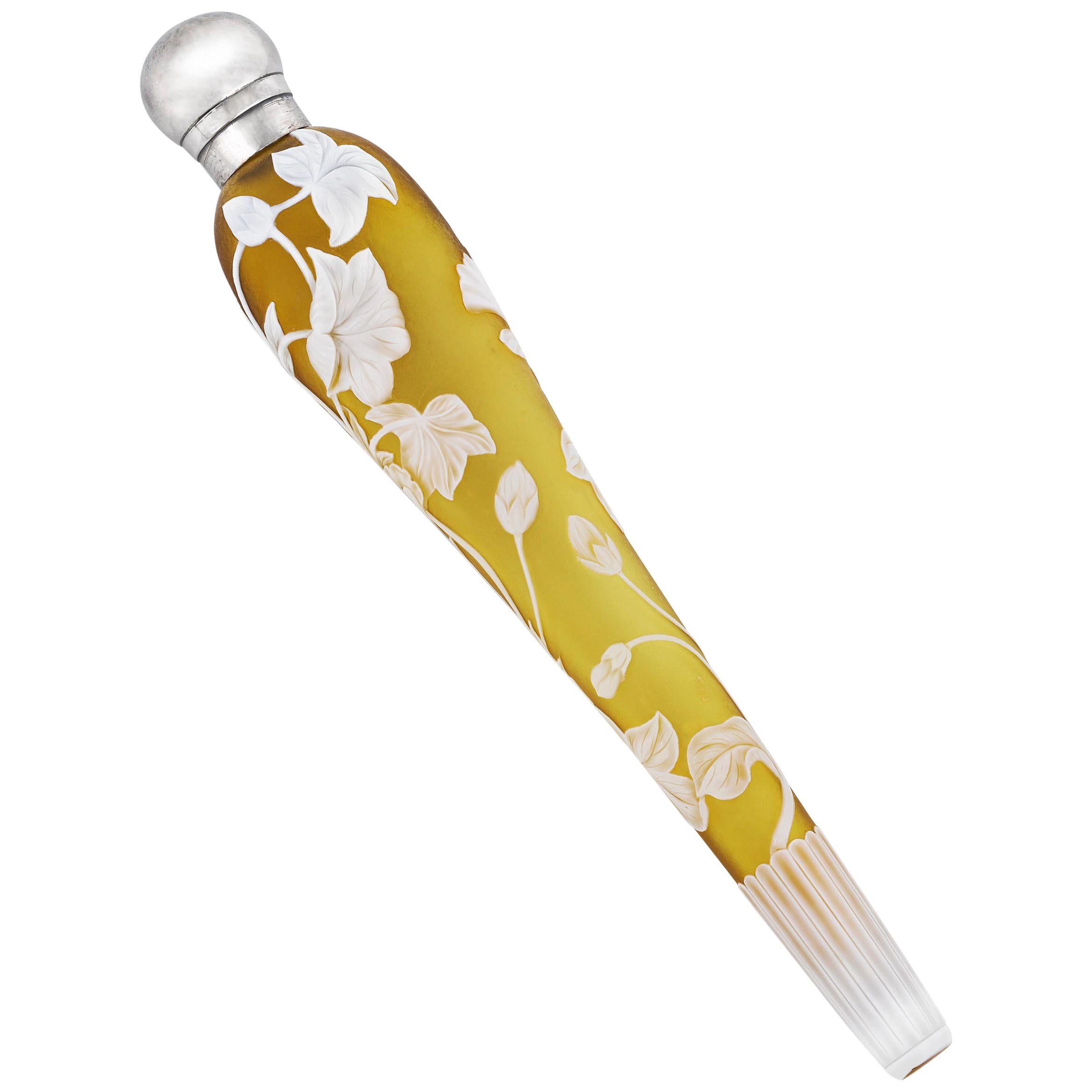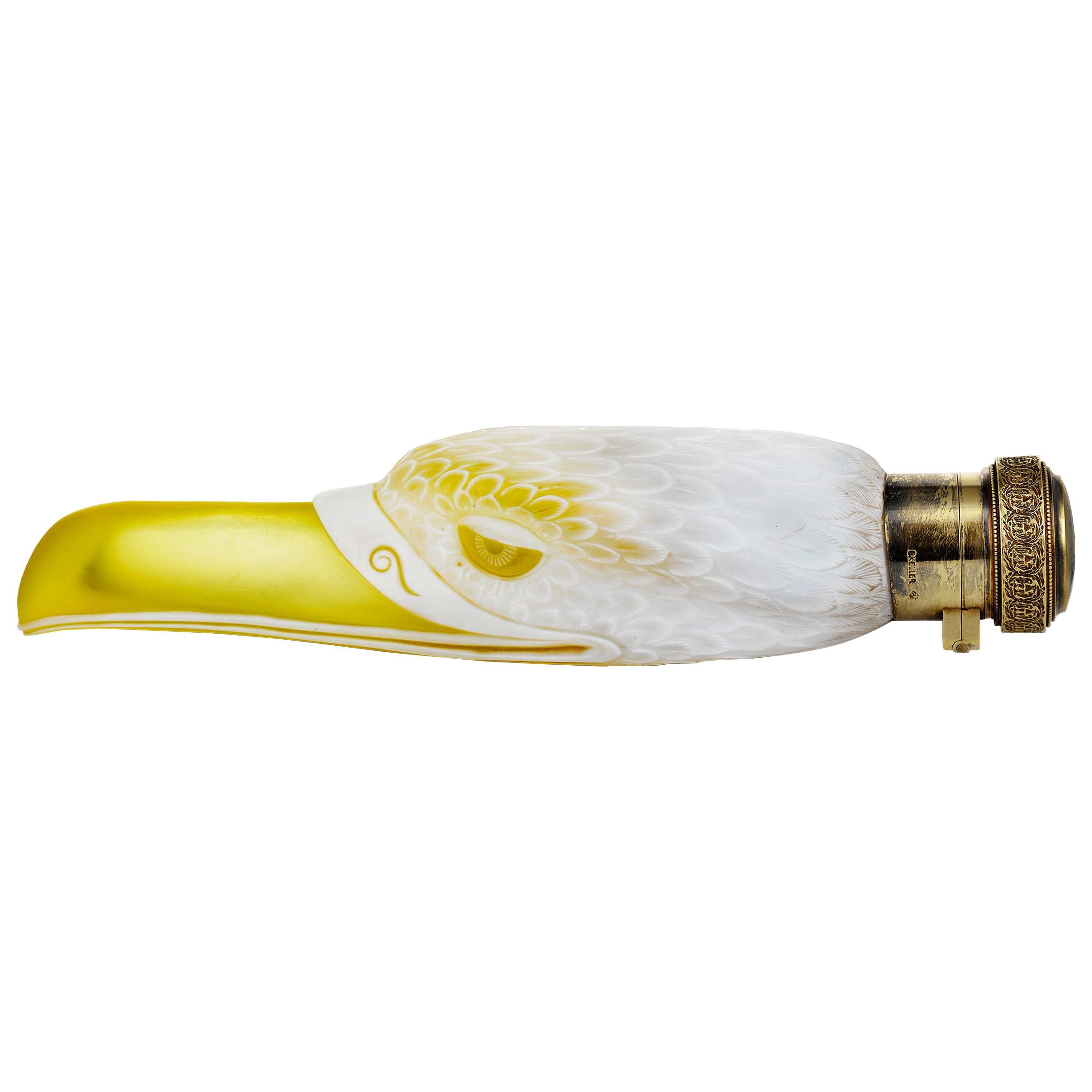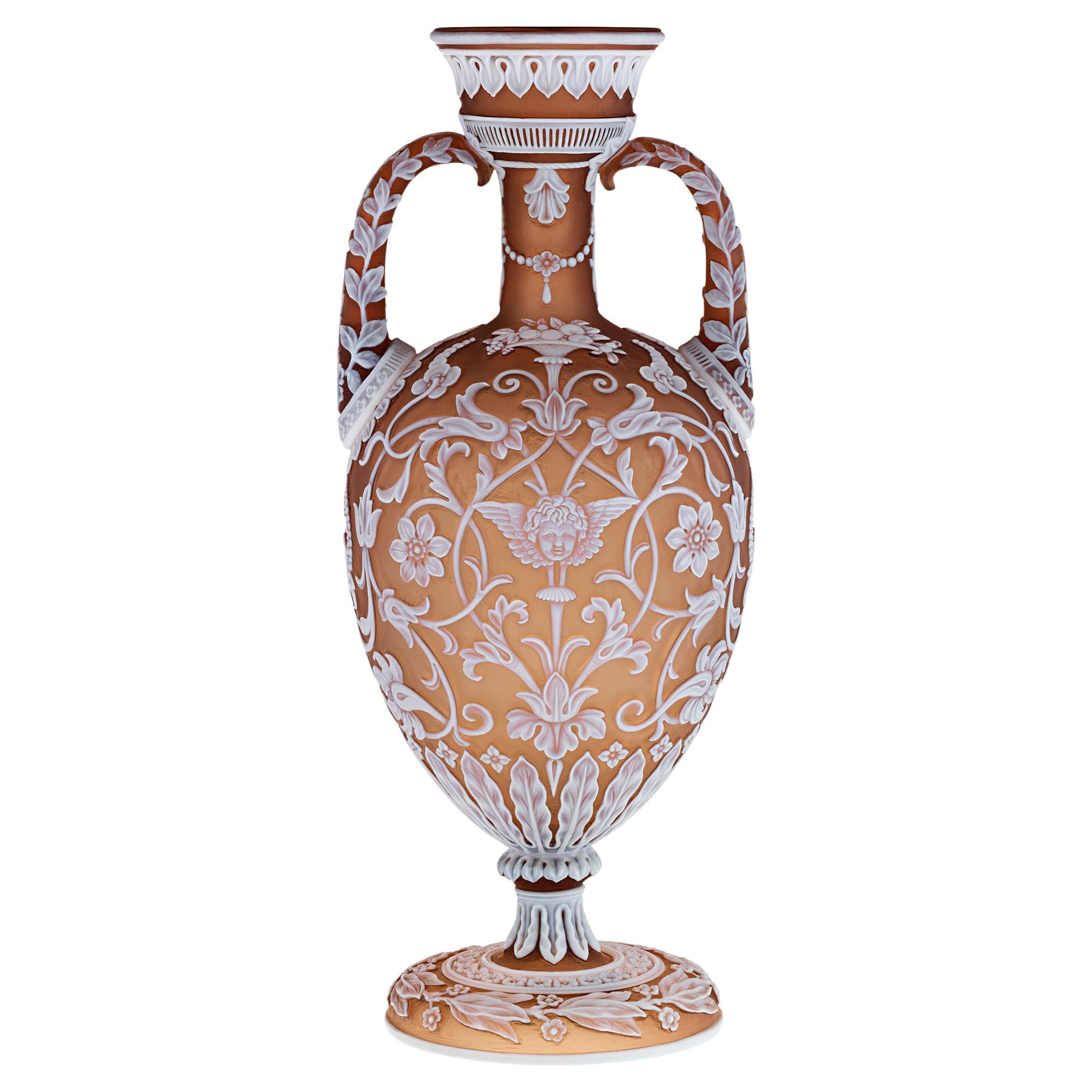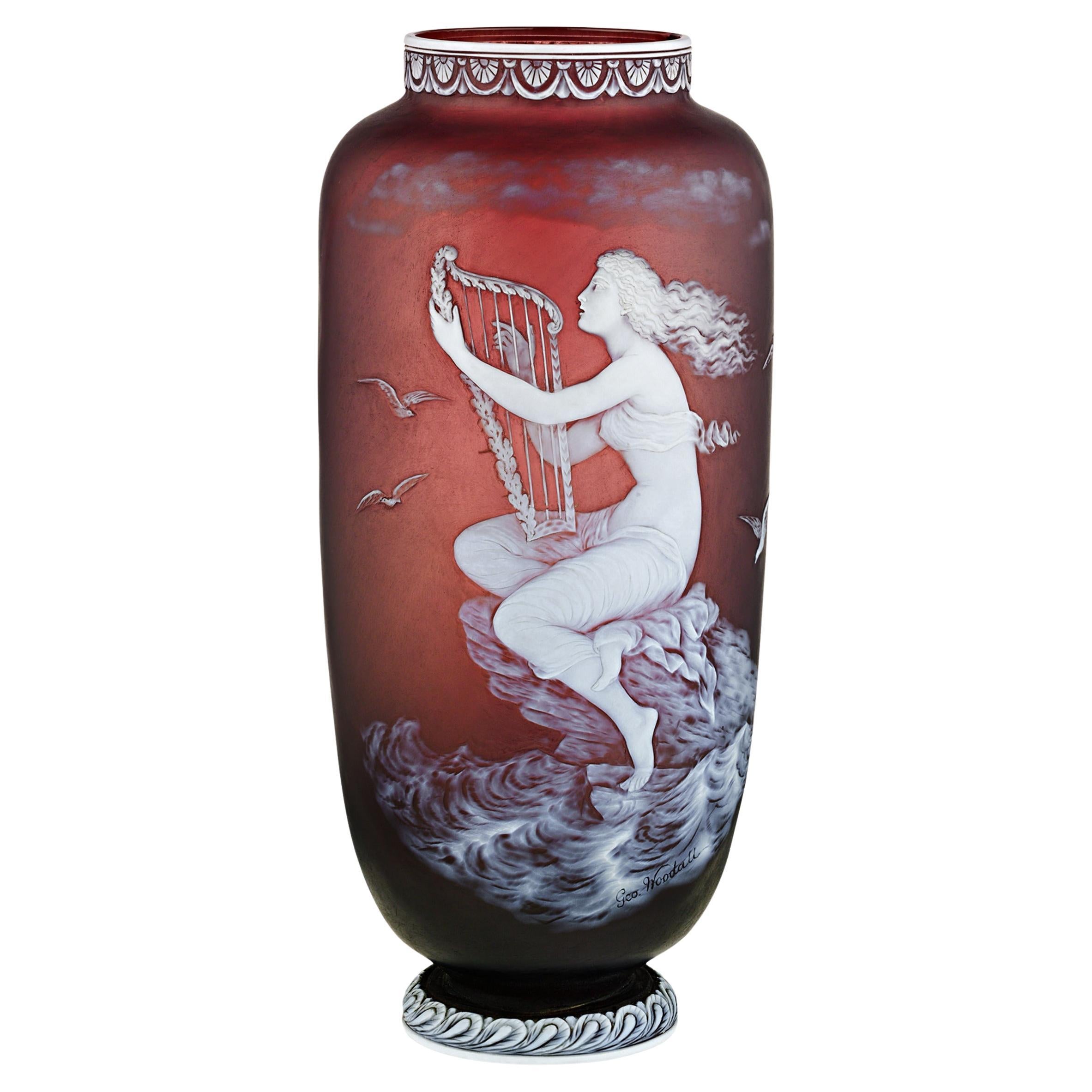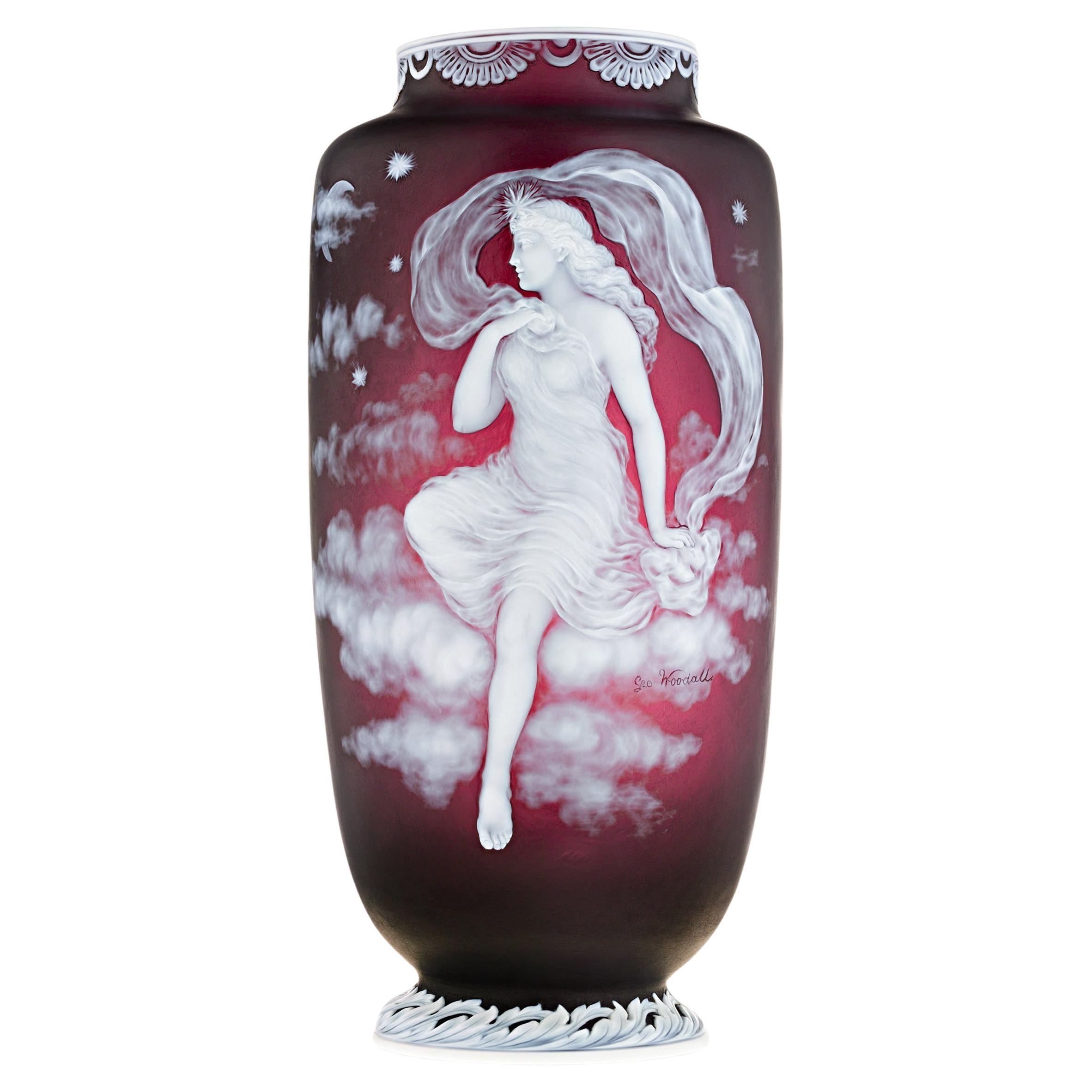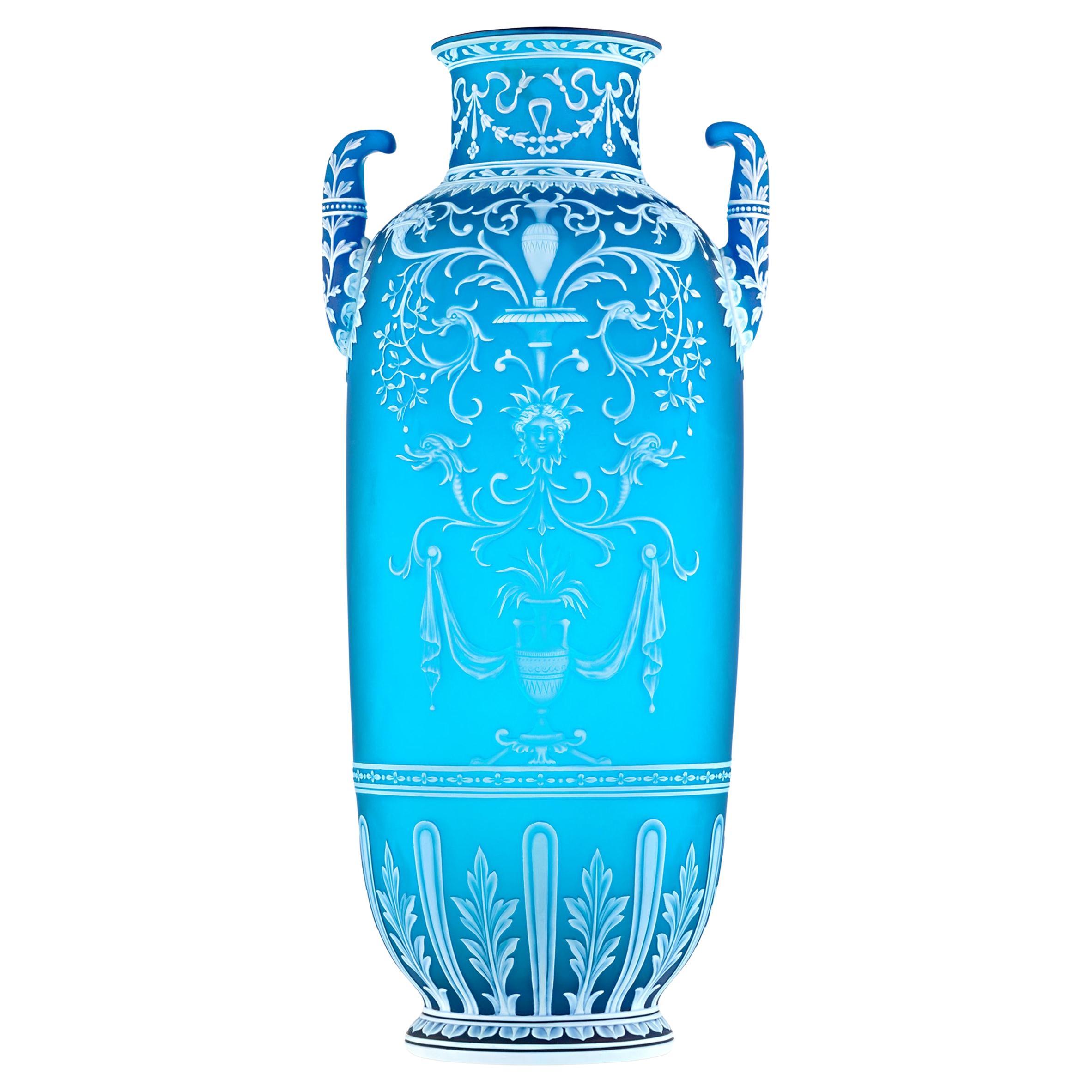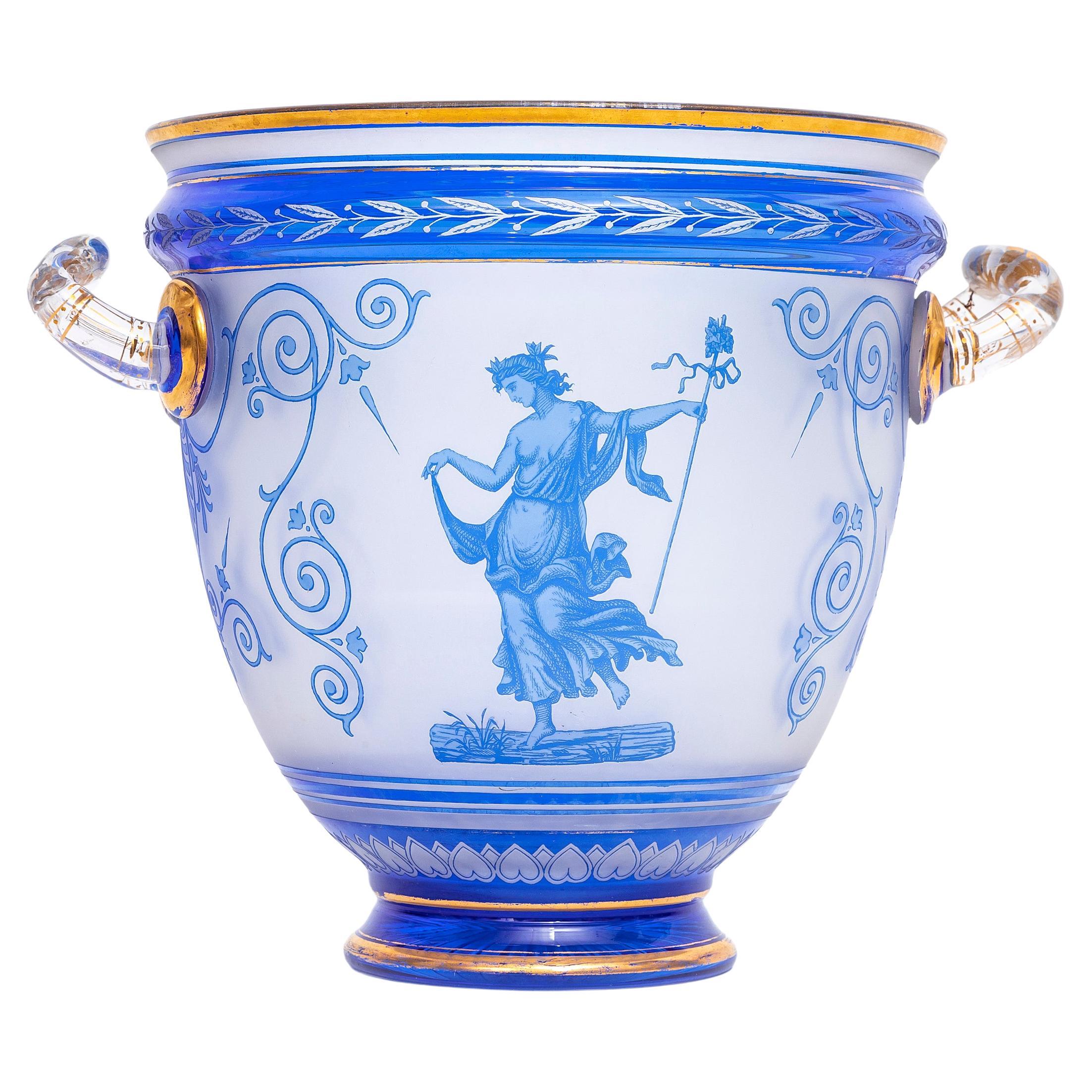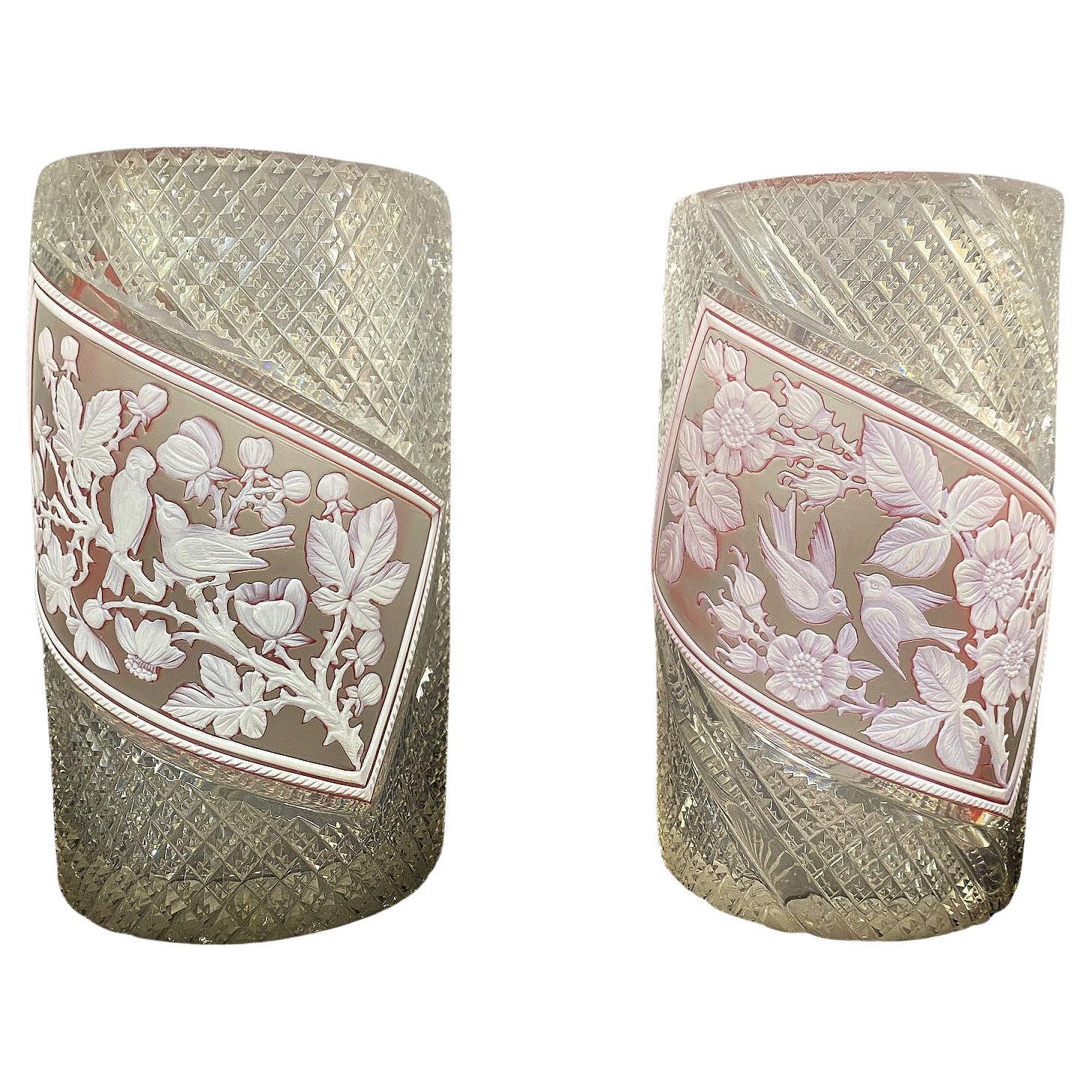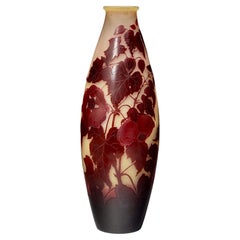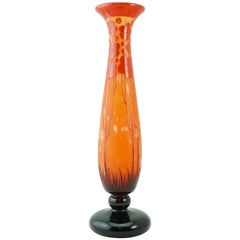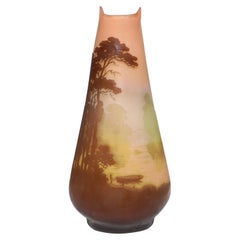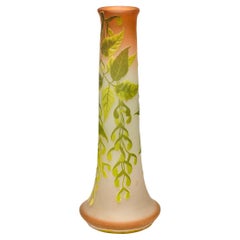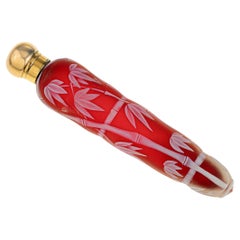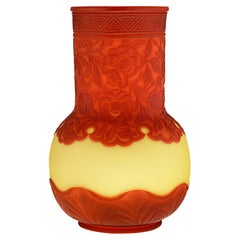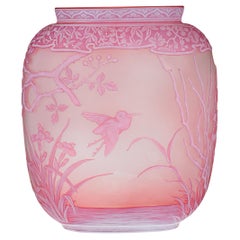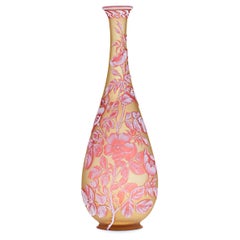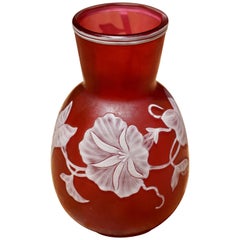
Thomas Webb & Sons Red and White Cameo Vasea
View Similar Items
Want more images or videos?
Request additional images or videos from the seller
1 of 7
Thomas Webb & Sons Red and White Cameo Vasea
About the Item
- Creator:Thomas Webb & Sons (Manufacturer)
- Dimensions:Height: 4.75 in (12.07 cm)Diameter: 3 in (7.62 cm)
- Style:Art Nouveau (Of the Period)
- Materials and Techniques:
- Place of Origin:
- Period:
- Date of Manufacture:1890
- Condition:Wear consistent with age and use.
- Seller Location:Dallas, TX
- Reference Number:1stDibs: LU1774211608143
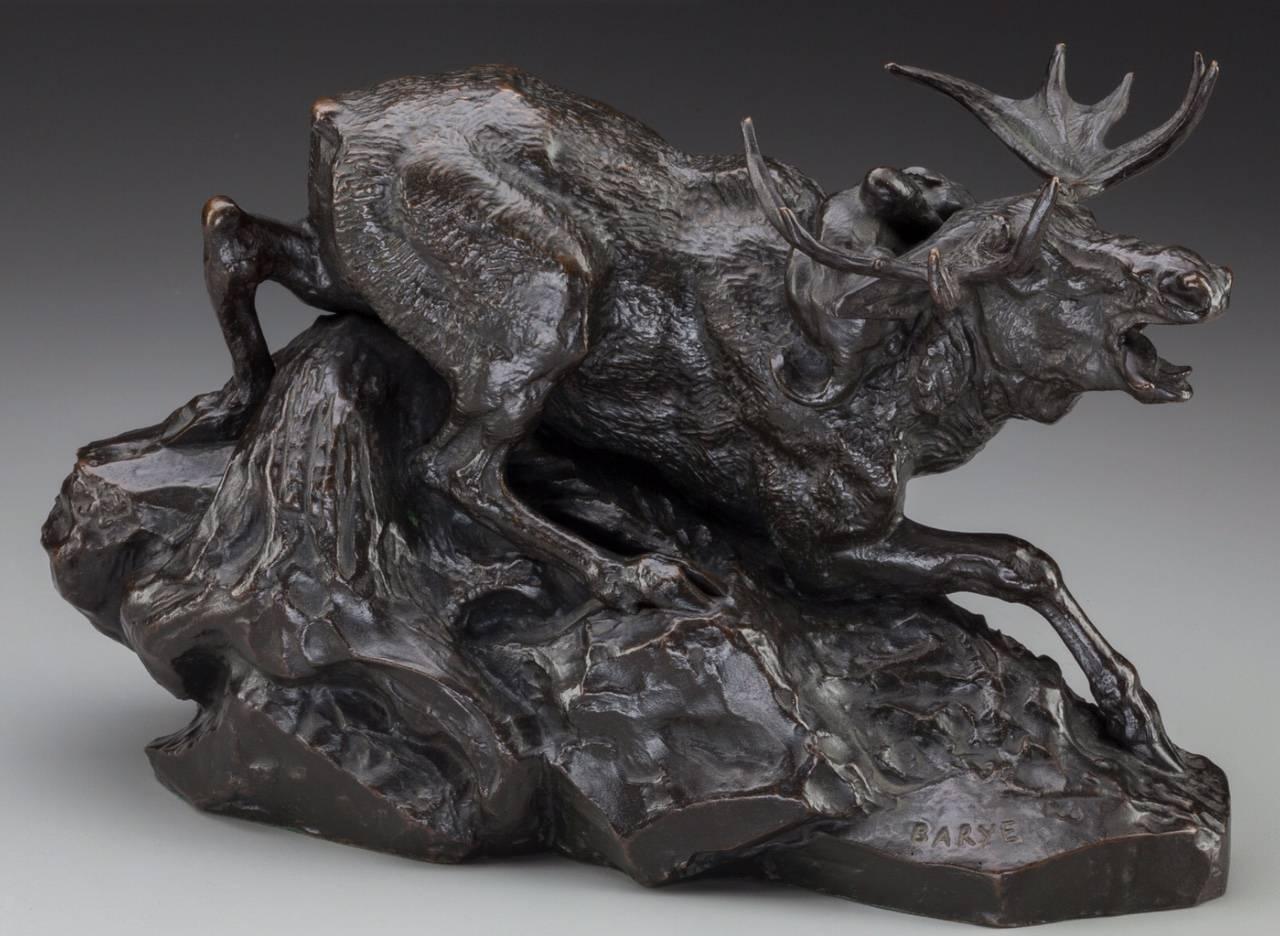
About the Seller
4.9
Gold Seller
Premium sellers maintaining a 4.3+ rating and 24-hour response times
Established in 2000
1stDibs seller since 2015
438 sales on 1stDibs
Typical response time: 1 hour
Authenticity Guarantee
In the unlikely event there’s an issue with an item’s authenticity, contact us within 1 year for a full refund. DetailsMoney-Back Guarantee
If your item is not as described, is damaged in transit, or does not arrive, contact us within 7 days for a full refund. Details24-Hour Cancellation
You have a 24-hour grace period in which to reconsider your purchase, with no questions asked.Vetted Professional Sellers
Our world-class sellers must adhere to strict standards for service and quality, maintaining the integrity of our listings.Price-Match Guarantee
If you find that a seller listed the same item for a lower price elsewhere, we’ll match it.Trusted Global Delivery
Our best-in-class carrier network provides specialized shipping options worldwide, including custom delivery.More From This Seller
View AllEmile Galle Red Cameo Vase
By Émile Gallé
Located in Dallas, TX
Emile Gallé Art Nouveau Acid etched and cameo three color glass vase. Rose flowers are window pained and let delicate lights waves through in a translucent effect, This is a rather l...
Category
Antique Early 1900s Art Nouveau Vases
Materials
Art Glass
Charles Schneider Le Verre Francais Cardemines Red Cameo Vase
By Charles Schneider
Located in Dallas, TX
This French Art Deco cameo glass vase was created by Charles Schneider (1881–1958) for his Le Verre Francais line. The vase in the “Cardamines” cutting was produced from 1924-1927. A...
Category
Vintage 1920s French Art Deco Vases
Materials
Art Glass
$1,900 Sale Price
50% Off
Large Emile Galle Scenic Cameo Vase
By Émile Gallé
Located in Dallas, TX
Emile Galle scenic wheel carved and acid etched cameo vase.
A beautiful and tall cameo vase by Galle. The 18 - 1/2” tall vase has a background of muted yellow glass near the base, which progresses to blue/gray at mid-vase, and then peach towards the top. Brown, cameo cut trees are generously displayed across the body of the vase, with the addition of a boat in the lake.
Signed "Galle".
Dimensions: 18 - 1/2” x 10” x 8”.
Condition: Very good
Émile Gallé (8 May 1846 in Nancy – 23 September 1904 in Nancy) was a French artist and designer who worked in glass, and is considered to be one of the major innovators in the French Art Nouveau movement. He was noted for his designs of Art Nouveau glass art and Art Nouveau furniture, and was a founder of the École de Nancy or Nancy School, a movement of design in the city of Nancy, France.
Gallé born on 4 March 1846 in the city of Nancy, France. His father, Charles Gallé, was a merchant of glassware and ceramics who had settled in Nancy in 1844, and his father-in-law owned a factory in Nancy which manufactured mirrors. His father took over the direction of his mother's family business, and began to manufacture glassware with a floral design. He also took over a struggling faience factory and began manufacturing new products.
The young Gallé studied philosophy and natural science at the Lycée Imperial in Nancy. At the age of sixteen he went to work for the family business as an assistant to his father, making floral designs and emblems for both faience and glass. In his spare time he became an accomplished botanist, studying with D.A. Godron, the director of the Botanical Gardens of Nancy and author of the leading textbooks on French flora. He collected plants from the region and from as far away as Italy and Switzerland. He also took courses in painting and drawing, and made numerous drawings of plants, flowers, animals and insects, which became subjects of decoration.
At the age of sixteen he finished the Lycée in Nancy and went to Weimar in Germany from 1862–1866 to continue his studies in philosophy, botany, sculpture and drawing. In 1866, to prepare himself to inherit the family business, he went to work as an apprentice at the glass factory of Burgun and Schwerer in Meisenthal, and made a serious study of the chemistry of glass production. Some of his early glass and faience works for the family factory at Saint-Clémont were displayed at the 1867 Paris Universal Exposition. In early 1870 he designed a complete set of dishware with a rustic animal designs for the family enterprise. During this time he became acquainted with the painter, sculptor and engraver Victor Prouvé, an artist of the romantic "troubadour" style, who became his future collaborator in the Nancy School.
He enlisted for military service in the Franco-Prussian War in 1870, then was demobilised after the disastrous French defeat in 1871 and the French loss to Germany of much of the province of Lorraine, including Meisenthal where he had done his apprenticeship. Thereafter the Cross of Lorraine, the patriotic symbol of the region, became part of his signature on many of his works of art.
After his demobilization Gallé went to London, where he represented his father at an exhibition of the arts of France, then to Paris, where he remained for several months, visiting the Louvre and Cluny Museum, studying examples of ancient Egyptian art, Roman glassware and ceramics, and especially early Islamic enamelled...
Category
Antique Early 1900s French Art Nouveau Vases
Materials
Art Glass
Emile Galle Large Cameo Glass Vase
By Émile Gallé
Located in Dallas, TX
Emile Galle Tall vase with maple branches
France, c. 1907-1907
Wheel carved and Acid-etched Cameo Glass Vase
Height: 21.5 Inches X 8 Inch diameter (55 × 20 cm)
Condition: Very Good...
Category
Antique Early 1900s French Art Nouveau Vases
Materials
Art Glass
Gallé Cameo Glass Anemone Vase, circa 1900
By Émile Gallé
Located in Dallas, TX
Galle Cameo Glass Anemone Vase, circa 1900 Art Nouveau
Marks: Gallé
Height: 9.5 inches (24.1 cm)
Diameter: 4.5
Condition: Vase features red and pink anemones over a white to yellow...
Category
Antique Early 1900s French Art Nouveau Vases
Materials
Art Glass
Monumental Emile Galle French Cameo Sailboat Vase
By Émile Gallé
Located in Dallas, TX
Emile Galle (French 1846-1904)
A lovely two color cameo vase with a yellow background featuring a lake scene with boats, trees and birds. The detail and fineness of the acid etchi...
Category
Antique Early 1900s French Art Nouveau Vases
Materials
Art Glass
You May Also Like
Thomas Webb & Sons Cameo Scent Bottle
By Thomas Webb & Sons
Located in New Orleans, LA
Of all the glassworks produced in the late 19th century, cameo glass was the most challenging to perfect. Only a handful of artisans succeeded in mastering this intricate craft, with the firm of Thomas Webb & Sons standing out as the most accomplished. Webb’s cameo...
Category
Antique 19th Century English Bottles
Materials
Art Glass
Thomas Webb & Sons Tri-Layer Cameo Vase
By Thomas Webb & Sons
Located in New Orleans, LA
Of all the glassworks produced in the late 19th century, cameo glass was the most challenging to perfect. Only a handful of artisans succeeded in mastering this intricate craft, with...
Category
Antique 19th Century English Vases
Materials
Glass
Thomas Webb & Sons Two-Color Cameo Vase
By Thomas Webb & Sons
Located in New Orleans, LA
Of all the glassworks produced in the late 19th century, cameo glass was the most challenging to perfect. Only a handful of artisans succeeded in mastering this intricate craft, with...
Category
Antique 19th Century English Vases
Materials
Glass
Thomas Webb & Sons Tri-Color Cameo Vase
By Thomas Webb & Sons
Located in New Orleans, LA
Of all the glassworks produced in the late 19th century, cameo glass was the most challenging to perfect. Only a handful of artisans succeeded in mastering this intricate craft, with...
Category
Antique 19th Century English Victorian Vases
Materials
Glass
Cameo Glass Perfume Bottle by Thomas Webb & Sons
By Thomas Webb & Sons
Located in New Orleans, LA
This rare cameo glass perfume bottle is the work of the inimitable British glassmakers Thomas Webb & Sons. Entirely handcrafted, the piece is a testament t...
Category
Antique 19th Century English Victorian Bottles
Materials
Glass
Albatross Cameo Glass Perfume by Thomas Webb & Sons
By Thomas Webb & Sons
Located in New Orleans, LA
This exceptionally rare cameo glass perfume bottle by Thomas Webb & Sons takes the form of an albatross. The upper layer of opal glass is expertly carved t...
Category
Antique Late 19th Century English Victorian Bottles
Materials
Glass
Recently Viewed
View AllMore Ways To Browse
Thomas White Vase
Stevens And Williams
Thomas Webb Antique Glass
Thomas Vines
English Cameo Glass
Webb Cameo
Thomas Webb Cameo Glass
Thomas Webb Cameo
Webb Cameo Vase
Stevens Williams Cameo
Murano Hand Blown Art Glass Vase
Antique Glass Vase Styles
Artisan Glass Vase
Heavy Glass Vase
Red And Yellow Vase
Modern Japanese Vessel
1970s Bedroom Furniture Sets
Blown Green Vase
